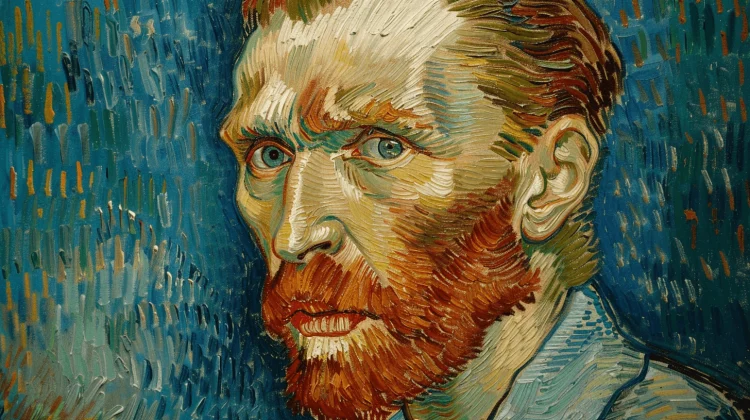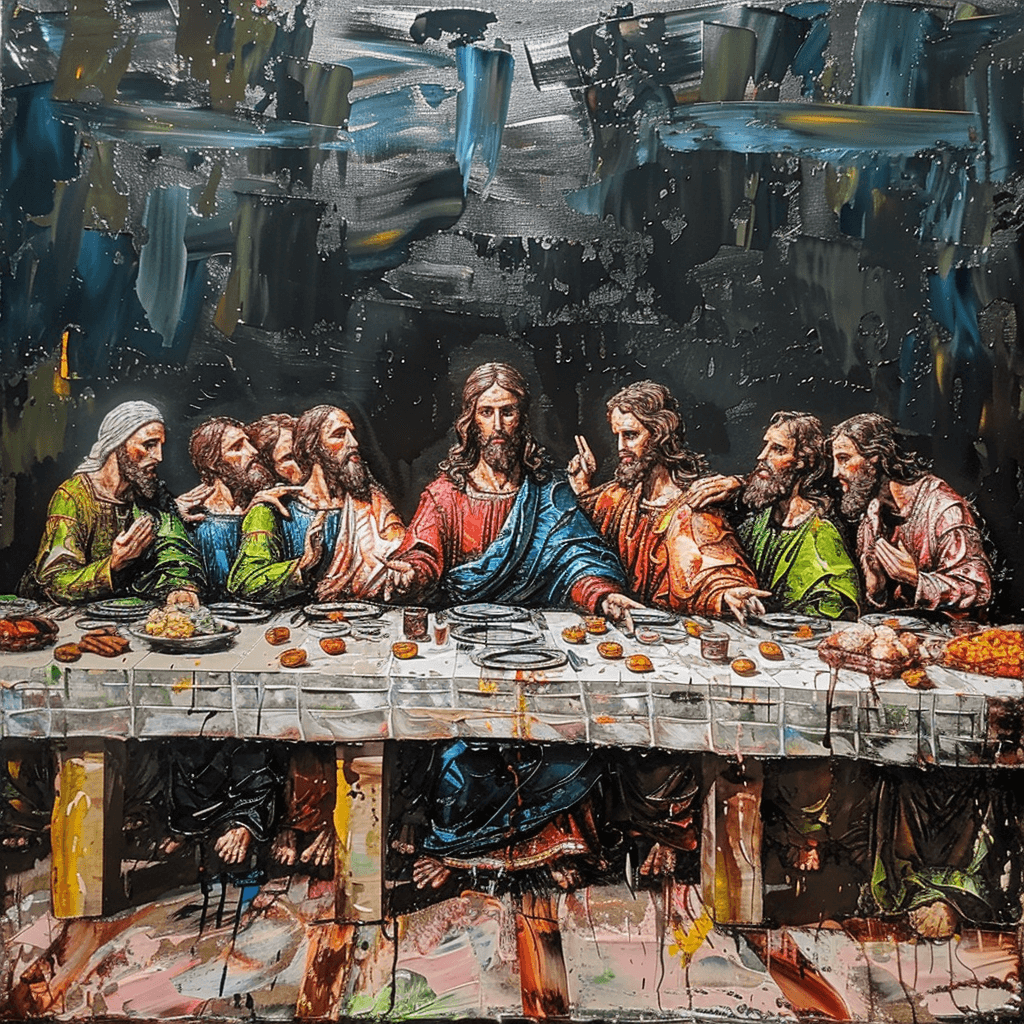In the ever-evolving landscape of art, the integration of artificial intelligence (AI) has emerged as a groundbreaking frontier, challenging traditional notions of creativity and expression. With advancements in machine learning algorithms, AI has been employed to generate art pieces that push the boundaries of imagination and innovation. From surreal landscapes to abstract compositions, this AI-generated art not only captivate audiences with their aesthetic appeal but also provoke thought and introspection about the intersection of technology and artistic creation.
1. ‘Mona Lisa’
The Mona Lisa, painted by Leonardo da Vinci in the early 16th century, is one of the most iconic and enigmatic works of art in history. Known for her mysterious smile and captivating gaze, the painting has captivated audiences for centuries, drawing millions of visitors to the Louvre Museum in Paris, where it is housed. Despite the passage of time, the Mona Lisa continues to inspire fascination and speculation, with scholars and art lovers alike pondering the secrets behind her enigmatic expression and the identity of her subject. With its masterful technique, subtle details, and timeless allure, the Mona Lisa remains a testament to Leonardo’s genius and an enduring symbol of artistic excellence.
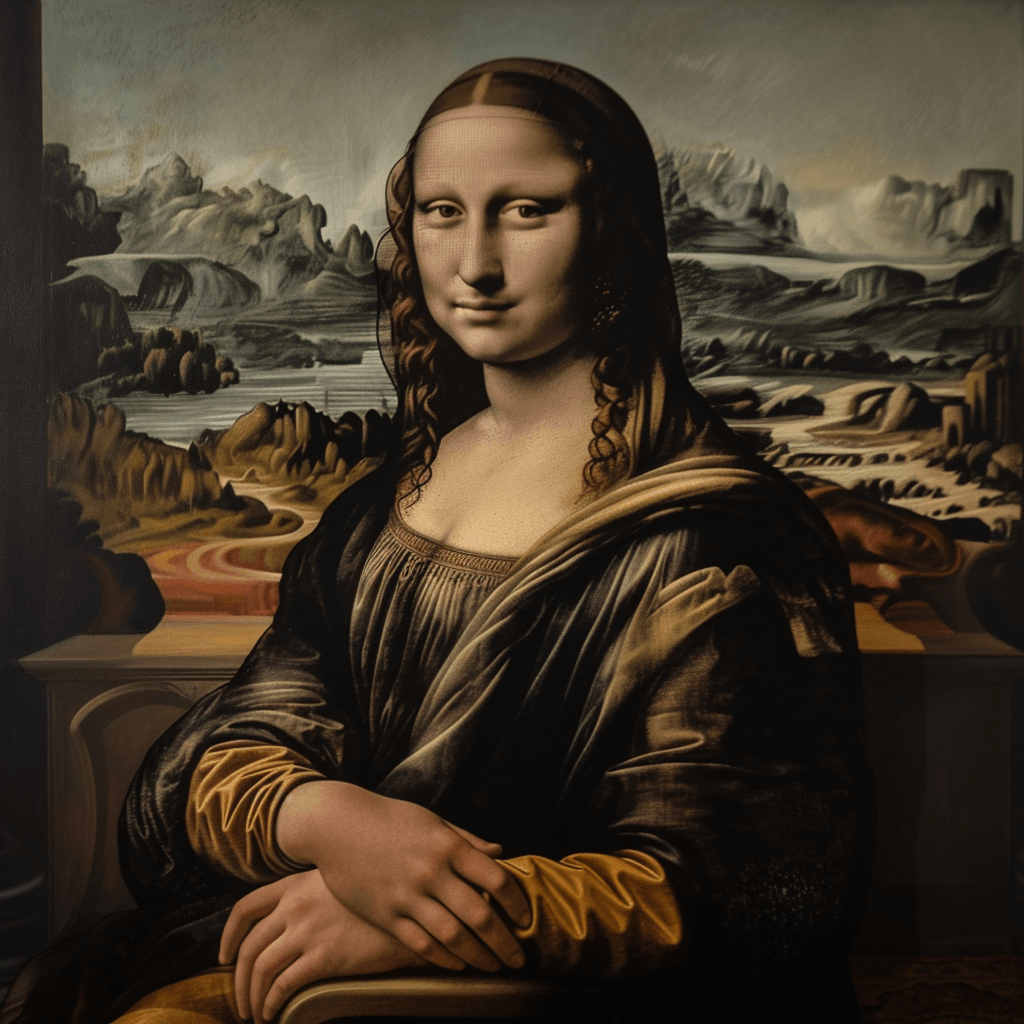 2. ‘The Scream’
2. ‘The Scream’
“The Scream,” created by Norwegian artist Edvard Munch in 1893, is one of the most iconic and haunting images in the history of art. Depicting a figure standing on a bridge, their face contorted in a silent scream of anguish, the painting is a powerful expression of existential dread and inner turmoil. The swirling colors and distorted forms convey a sense of chaos and despair, resonating with viewers on a deeply emotional level. “The Scream” is widely regarded as a masterpiece of expressionism, a movement that sought to convey subjective emotions and experiences through art. With its timeless depiction of universal human suffering, “The Scream” continues to captivate and disturb audiences around the world, cementing its status as an enduring symbol of existential angst.
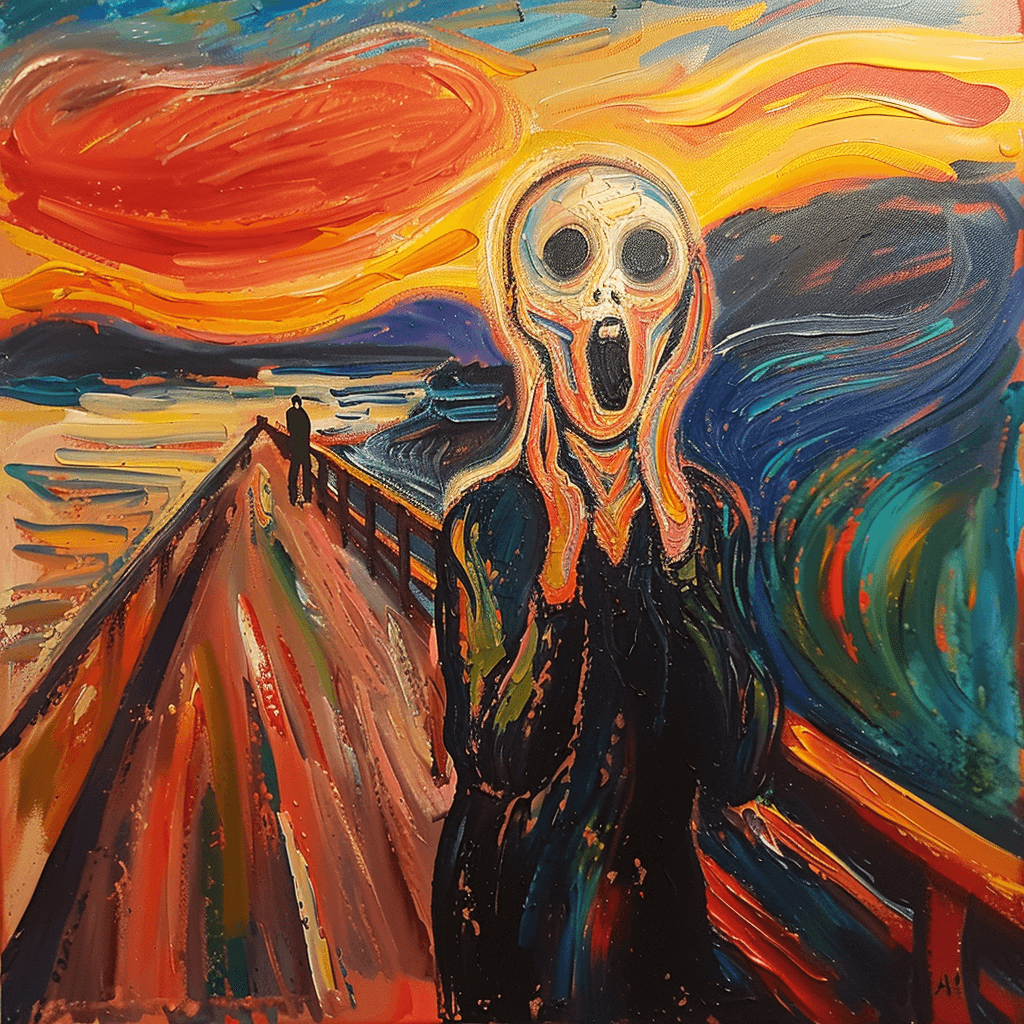 3. ‘Whistler’s Mother‘
3. ‘Whistler’s Mother‘
“Whistler’s Mother,” formally known as “Arrangement in Grey and Black No. 1,” is a masterpiece by American artist James McNeill Whistler, completed in 1871. The painting portrays Whistler’s mother, Anna McNeill Whistler, seated in a wooden chair against a neutral background. Clad in dark attire, she sits with poise and grace, her hands clasped in her lap, evoking a sense of maternal dignity and tranquility. Despite its seemingly straightforward composition, “Whistler’s Mother” resonates deeply with viewers, capturing the timeless essence of maternal love and strength. This iconic portrait continues to captivate audiences worldwide, solidifying its place as an enduring symbol of familial devotion and artistic excellence.
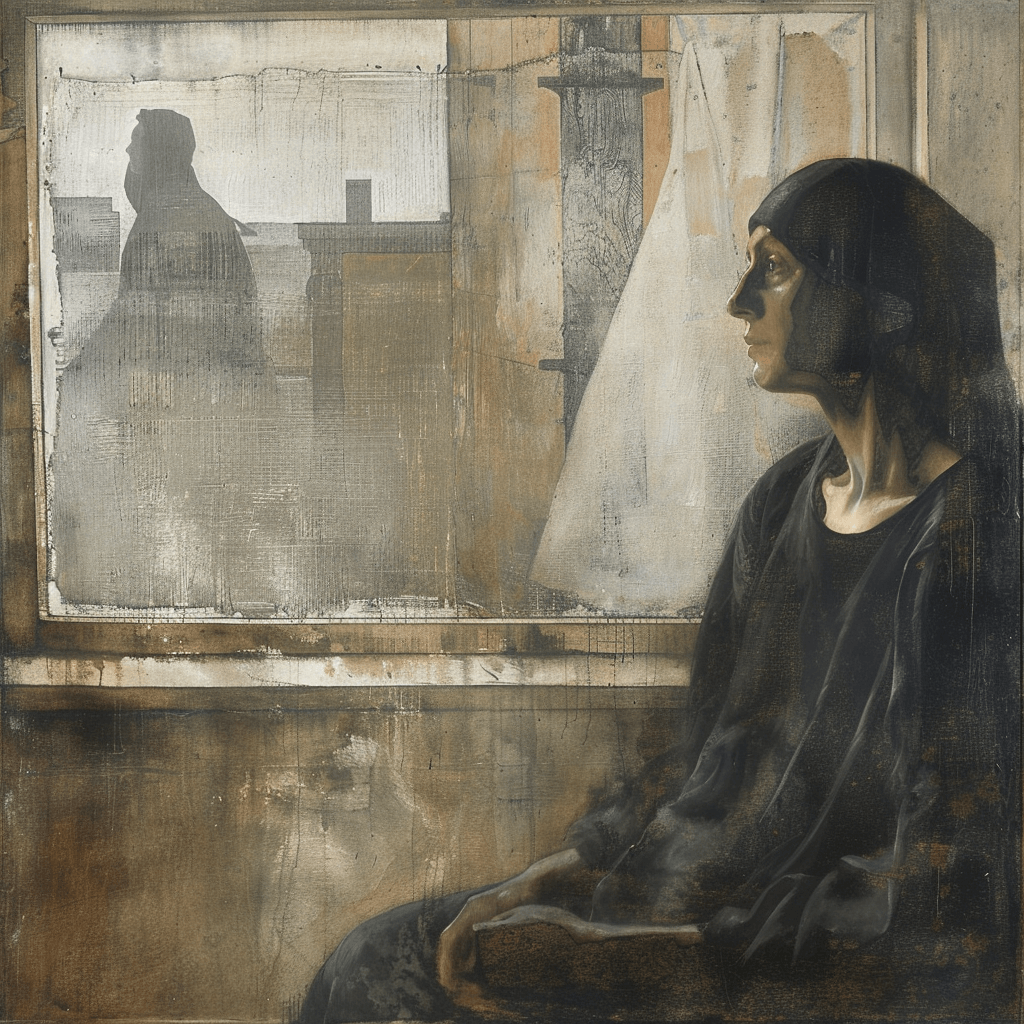 4. ‘The Last Supper’
4. ‘The Last Supper’
“The Last Supper,” a masterpiece by Leonardo da Vinci from the late 15th century, is a monumental portrayal of Jesus Christ’s final meal with his twelve apostles. Set in the Upper Room, da Vinci’s composition captures the dramatic moment when Jesus reveals that one of his disciples will betray him. Each figure’s reaction is meticulously rendered, from disbelief to sorrow, contributing to the painting’s emotional depth and narrative complexity. Despite its age, “The Last Supper” remains a timeless symbol of faith and betrayal, inviting viewers to ponder its profound themes and enduring significance in Christian iconography.
5. ‘The Girl with the Pearl Earring’
“The Girl with the Pearl Earring” by Johannes Vermeer is a mesmerizing masterpiece from the 17th century, depicting a young woman with a captivating gaze and a single pearl earring. Vermeer’s meticulous attention to detail and subtle use of light and shadow imbue the painting with an aura of mystery and elegance, inviting viewers to ponder the secrets behind the girl’s enigmatic expression and the significance of the pearl adornment.
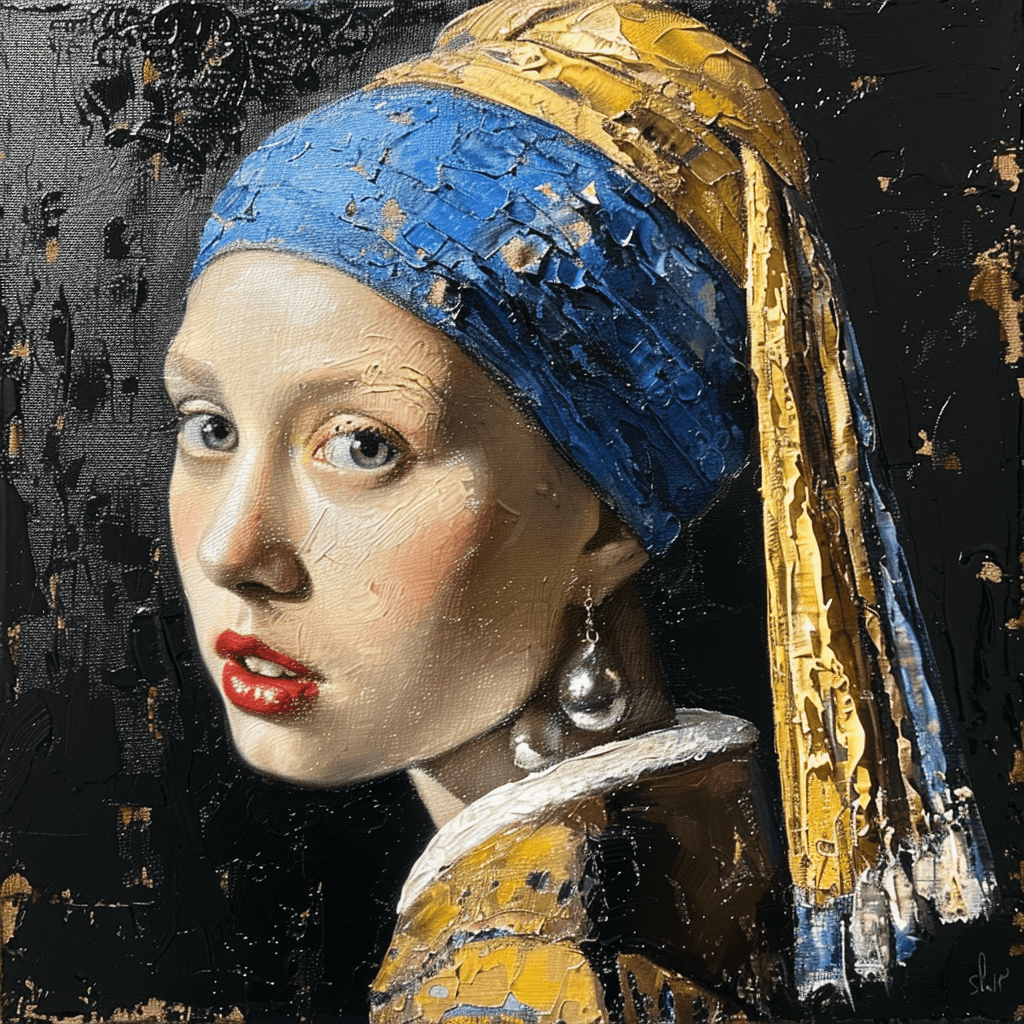 6. ‘The Starry Night’
6. ‘The Starry Night’
“The Starry Night” by Vincent van Gogh is a breathtaking masterpiece that captures the swirling night sky over the village of Saint-Rémy-de-Provence. Painted in 1889 during van Gogh’s stay at the Saint-Paul-de-Mausole asylum, the painting depicts a dreamlike landscape illuminated by a brilliant crescent moon and countless shimmering stars. Van Gogh’s bold brushwork and vivid colors convey a sense of movement and emotion, creating a powerful and unforgettable image that continues to inspire awe and wonder in viewers around the world.
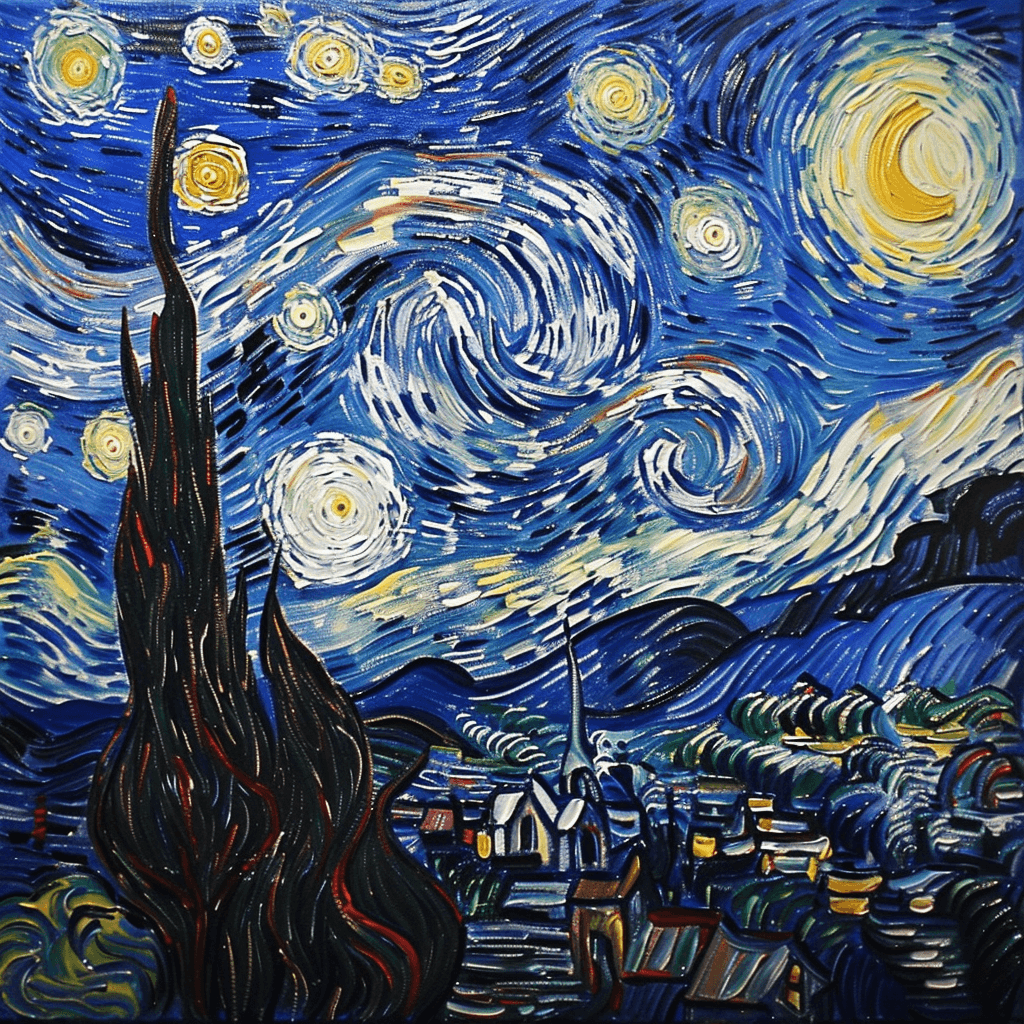 In the realm of art, the advent of AI-generated pieces has ignited a new era of exploration and experimentation, offering limitless possibilities for creative expression. As we continue to witness the evolution of AI in the art world, one thing remains certain: the fusion of human ingenuity and machine intelligence has the potential to reshape our understanding of art and redefine the boundaries of what is possible. Whether it’s generating captivating landscapes or crafting abstract masterpieces, AI-generated art serves as a testament to the power of technology to inspire, provoke, and challenge our perceptions of creativity and beauty.
In the realm of art, the advent of AI-generated pieces has ignited a new era of exploration and experimentation, offering limitless possibilities for creative expression. As we continue to witness the evolution of AI in the art world, one thing remains certain: the fusion of human ingenuity and machine intelligence has the potential to reshape our understanding of art and redefine the boundaries of what is possible. Whether it’s generating captivating landscapes or crafting abstract masterpieces, AI-generated art serves as a testament to the power of technology to inspire, provoke, and challenge our perceptions of creativity and beauty.








